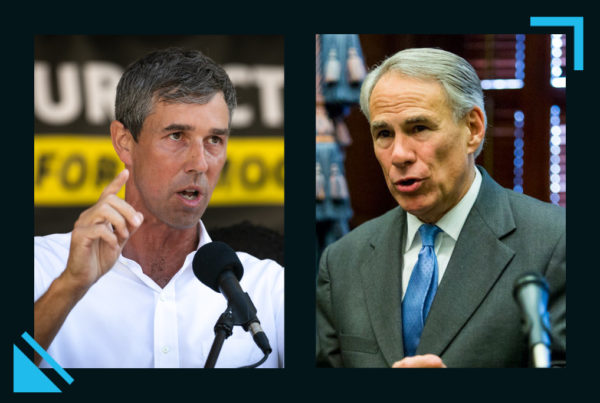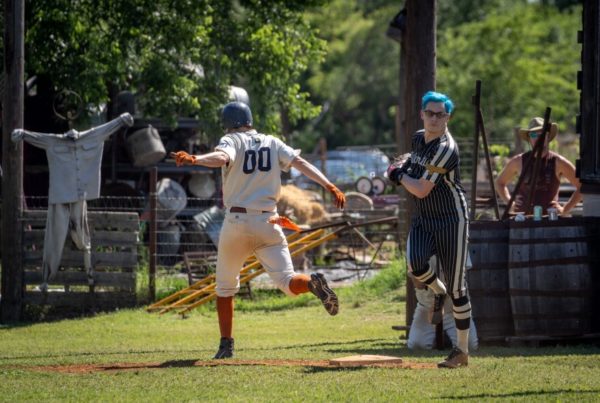Texas cattle ranchers face long lines at cattle auctions as they seek to downsize their herds due to persistent drought conditions and financial pressures brought on by inflation.
Triple-digit temperatures have left a large swath of Texas pasture lands in bad condition, leading some ranchers to sell their cattle earlier this year than normal. Higher prices for fuel, fertilizer and feed have also impacted Texas’ cattle market.
David Anderson, a Texas A&M professor and livestock economist, spoke to the Texas Standard about the latest on Texas cattle. Listen to the interview above or read the transcript below. Listen to the interview above or read the transcript below.
This transcript has been edited lightly for clarity:
Texas Standard: Tell us a little bit about what state cattle sales look like right now. What can you glean from those sales?
David Anderson: I think a lot of people have seen pictures of long lines at local auction markets with ranchers taking a lot more cows and calves to market, in some cases, earlier than they normally would, and that’s created some long lines and lots of sales. And I think if we look back historically at some major droughts we’ve had, this is something we see in major droughts.
Are people buying those cattle and cattle stocks and what exactly is happening in the cattle market?
Well, luckily, there’s a market for not only the cattle, but beef also. You know, with many of our old cows that are past their productive life, where they eventually go is to a meatpacker and to ground beef to make hamburgers. And one of the things with this market today is we have a robust demand for ground beef. Folks like hamburgers. And with higher prices for a lot of things, we see some shifting around and consumer demand, maybe buying fewer steaks and more hamburgers. So, there’s a demand for those older cows. And those prices have been surprisingly good given the number of animals going to market.
Let’s talk a little bit about the role that rising inflation has played in all of this. If you’re a cattle rancher where are you getting pinched hardest?
Well, there’s two things. The first, I think most important is drought. The second is really economic things like higher fuel costs to move those animals, higher fertilizer prices for improved pastures. All of those things work into rising costs. And costs have gone up faster than calf prices have. So, there’s an economic pressure to reduce our herds.
If you’re getting better prices for meat, for example, wouldn’t that offset other expenses?
Those higher calf prices do help, but the connection between the meat in retail — like at your grocery store or restaurant — and the rancher, is a subject of a lot of consternation among ranchers about why they have not participated as much as they would have hoped with really high beef prices over the last couple of years through the pandemic. We’ve had very high prices. And there’s a lot of concern over how that connection happens. And a lot of ranchers don’t think they have participated fully as much as they should have in those high prices.
Is that because of the relatively small number of meatpackers?
That’s the subject of a bunch of House and Senate Agriculture Committee hearings over the last year or two with a lot of concerns about what’s the potential for market power by relatively few meatpackers that do control a large portion of beef production in the U.S.
As we look at extended triple-digit summers and extended drought periods with climate change — and add into that inflation, how is this story playing out? Is this an historic period for Texas cattle ranchers?
I think it is. I think we’re going to talk about this year as rivaling 2011, the fifties, the thirties. And if you went back in the record, 1918 was a historically hot, dry, serious drought year. And I think we’ll talk about this year as rivaling some of those years, at least so far, compounded by, inflationary pressures on costs, the turmoil in all of our economy that’s stemming from the pandemic. And so, this particular drought has a bunch of other things going on in the broader economy.
What about the cattle industry writ large in Texas? Can it survive this drought as you see it?
We still have by far the greatest number of cows in any state. We’ve got the largest number of cattle on feed in our feedlots. And so, really big picture, I tend to be pretty optimistic about the cattle market and beef market for the future. But we do have periods of severe drought that forces our numbers lower, changes stocking rates. It takes time for range in pasture to recover.
What about consumers? You see any relief in sight for them?
I think there is some potential for lower prices, particularly, for some of what we call middle meats — the steaks that come from the middle of that carcass like the rib, the strip loins, the things you see there at the store. But overall, with fewer cows, fewer calves are born and there is less beef production. So, over the next two or three years, we’re facing less beef production, and that certainly keeps the pressure for higher prices there.













